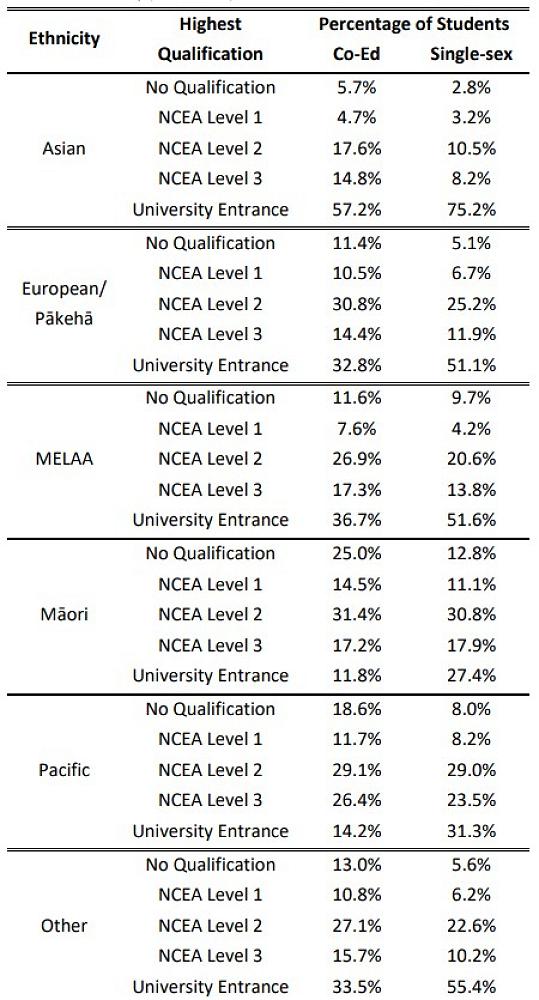
Achievement in New Zealand Boys’ Schools 2010 - 2021
The Association of Boys’ Schools of New Zealand (ABSNZ) recently released research comparing male achievement between coeducational and single-sex secondary schools in New Zealand from 2017 – 2021. This followed previous research reports examining data from 2010 – 2012 and 2013 – 2016. The ABSNZ research data now covers 12 consecutive years with all three reports reaching the same conclusions:
- Boys in boys’ schools have higher achievement rates than boys in coeducational schools at all levels of qualification.
- Boys in boys’ schools are less likely to leave secondary school without a qualification than boys in coeducational schools.
These findings apply across all ethnic groups and across all decile rankings:
In relation to the achievement statistics analysed by ethnicity, the most recent report noted that “across all ethnic categories, single-sex schools had a higher UE (university entrance) rate than coeducational schools.”
In relation to decile rankings the most recent report notes that “male school leavers from single-sex schools perform better on average than their counterparts in coeducational schools, in each decile range and at all achievement levels.”
The summary from the 2017 – 2021 report concludes that “male school leavers from single-sex schools had higher attainment rates than those from coeducational schools at all levels across every disaggregation considered in this report. The existence of the single-sex advantage in NZ secondary schools is irrefutable.”
All three ABSNZ research reports can be downloaded at the bottom of this article or from the ABSNZ website.
From the 2017 - 2021 Report
Overall achievement:
The male attainment rate was between 8.0 and 18.8 percentage points higher across all achievement levels for single-sex schools than for coeducational schools from 2017 to 2021. This is most prominent at the higher levels, with the UE rate almost 20 percentage points higher for single-sex schools than coeducational schools.
- The UE attainment rate is 18.8 percentage points higher for single-sex schools.
- The level 3 pass rate is 16.2 percentage points higher for single-sex schools.
- The level 2 pass rate is 11.6 percentage points higher for single-sex schools.
- The level 1 pass rate is 8.0 percentage points higher for single-sex schools.
Achievement by Ethnicity:
Male achievement rates between ethnic groups from 2017 – 2021:
The lowest UE rates were found in Māori and Pacific students.
- Approximately 15% for coeducational schools.
- Approximately 30% for single-sex schools.
Moderate UE rates were found in European/Pākehā, MELAA, and other-nationality students.
- Approximately 35% for coeducational schools.
- Approximately 55% for single-sex schools.
The highest UE rates were found in Asian students.
- Approximately 60% for coeducational schools.
- Approximately 75% for single-sex schools.

Achievement by Decile Ranking:
Male school leavers from single-sex schools perform better on average than their counterparts in coeducational schools, in each decile range and at all achievement levels.
- In deciles 1 - 2, the UE rate is 23.4 percentage points higher for single-sex schools.
- In deciles 3 - 4, the UE rate is 10.6 percentage points higher for single-sex schools.
- In deciles 5 - 6, the UE rate is 9.4 percentage points higher for single-sex schools.
- In deciles 7 - 8, the UE rate is 9.0 percentage points higher for single-sex schools.
- In deciles 9 - 10, the UE rate is 16.9 percentage points higher for single-sex schools.


